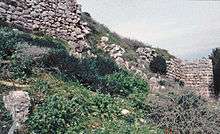Swedish Institute at Athens

The Swedish Institute at Athens (Swedish: Svenska Institutet I Athen; Greek: Σουηδικό Ινστιτούτο Αθηνών) is one of the 17 foreign archaeological institutes operating in Athens, Greece.
General information, facilities
Established in 1948, the Swedish Institute at Athens was the 7th Foreign Archaeological Institute to be founded in Greece, and the first since World War I. Since then, it has developed an important record of fieldwork (both excavation and survey) in Crete. Together with its Danish, Finnish and Norwegian counterparts, the Swedish Institute contributes to the Nordic Library at Athens.
Kavala
The Institute also owns a Bauhaus mansion at Kavala, available as a residence to Swedish artists, writers and scholars.
Archaeological work

Archaeological Projects conducted by the Swedish Institute include excavations at Aphidna (Attica), Asine (Argolis), Agios Elias (Arcadia), Berbati (Argolis), Chania Kastelli (Crete), Dendra (Argolis), Kalaureia (Poros), Malthi (Messenia), Midea (Argolis), Paradeisos (Western Thrace), and surveys at Asea (Arcadia), Makrakomi (Phthiotis) and Vlochos (Thessaly).
List of directors
- Erik Holmberg 1947–1948
- Åke Åkerström 1948–1956
- Arne Furumark 1956–1957
- Paul Åström 1958–1963
- Carl-Gustaf Styrenius 1963–1971
- Åke Åkerström 1971–1972
- Pontus Hellström 1972–1976
- Robin Hägg 1976–1994
- Berit Wells 1994–2003
- Ann-Louise Schallin 2004-2010
- Arto Penttinen 2010-2016
- Jenny Wallensten 2017-
See also
Bibliography
- E. Korka et al. (eds.): Foreign Archaeological Schools in Greece, 160 Years, Athens, Hellenic Ministry of Culture, 2006, p. 144-151.
External links